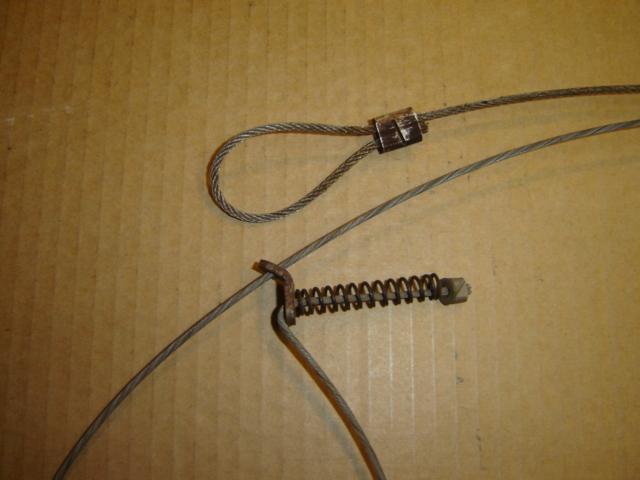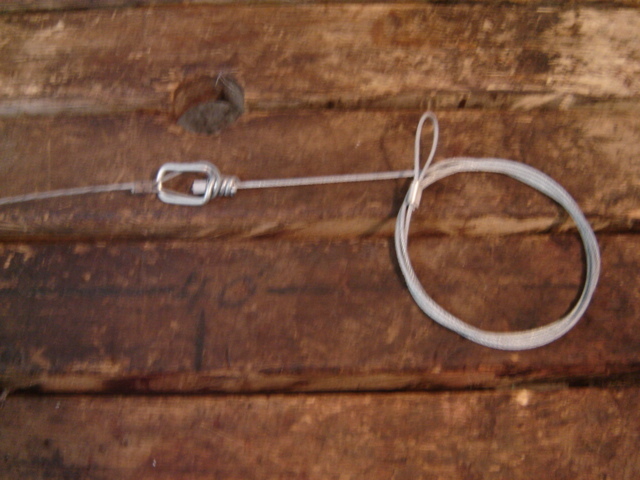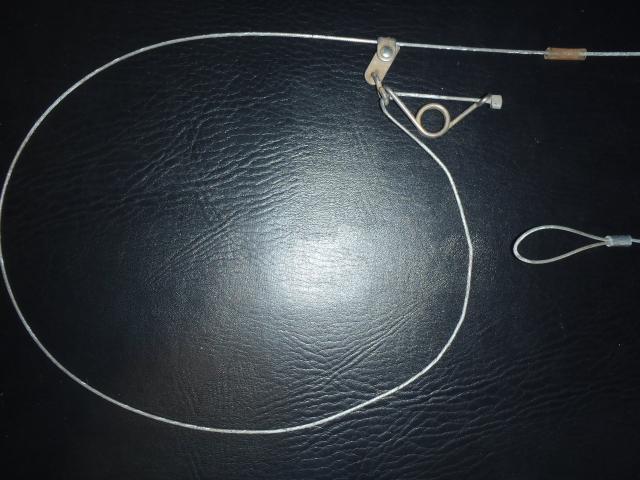For coyote/wolf snares I use 6 feet of 5/64 1/19 cable and 6 feet of 7X7 or 1X19 5/64 or 3/32 cable for an extension, usually used cable not suitable for loop construction. The midline #9 wire swivel is simply for connecting the extension to the snare. I use a 3/32 double ferrule as a whammy for supporting the snare on an 11ga support wire. A 50# coil compression dispatch spring is used along with whatever lock I choose to use, generally an Amberg, cam loc or micro lock.
Always go with the lay of the cable when forming loops. Ferrules and end stops should be cramped with a swagger or hammered and cross punched with a standard screwdriver. For ultimate efficiency the snare should be loaded. This can be done once the snare construction is completed or just before hanging in the field.


Snare loading is a method of adjusting the snare so that it has a rounder loop and will work more efficiently. To load the snare, grab the lock with your left hand and about 7 -8 inches of cable with your right hand. Run this portion of cable, in its natural wire curve, several times over a small round rod or screwdriver that has been clamped in a vise. Do not apply to much pressure on 7X7 cable or the snare will become kinked or twisted. The 1X19 cable will take a lot more pressure but you still need to be careful. Practice will teach you how much pressure is needed to provide either cable with a round loop that will close quickly when little pressure is applied to the bottom of the loop. As mentioned previously 1X19 will provide larger round loops than 7X7 cable.







